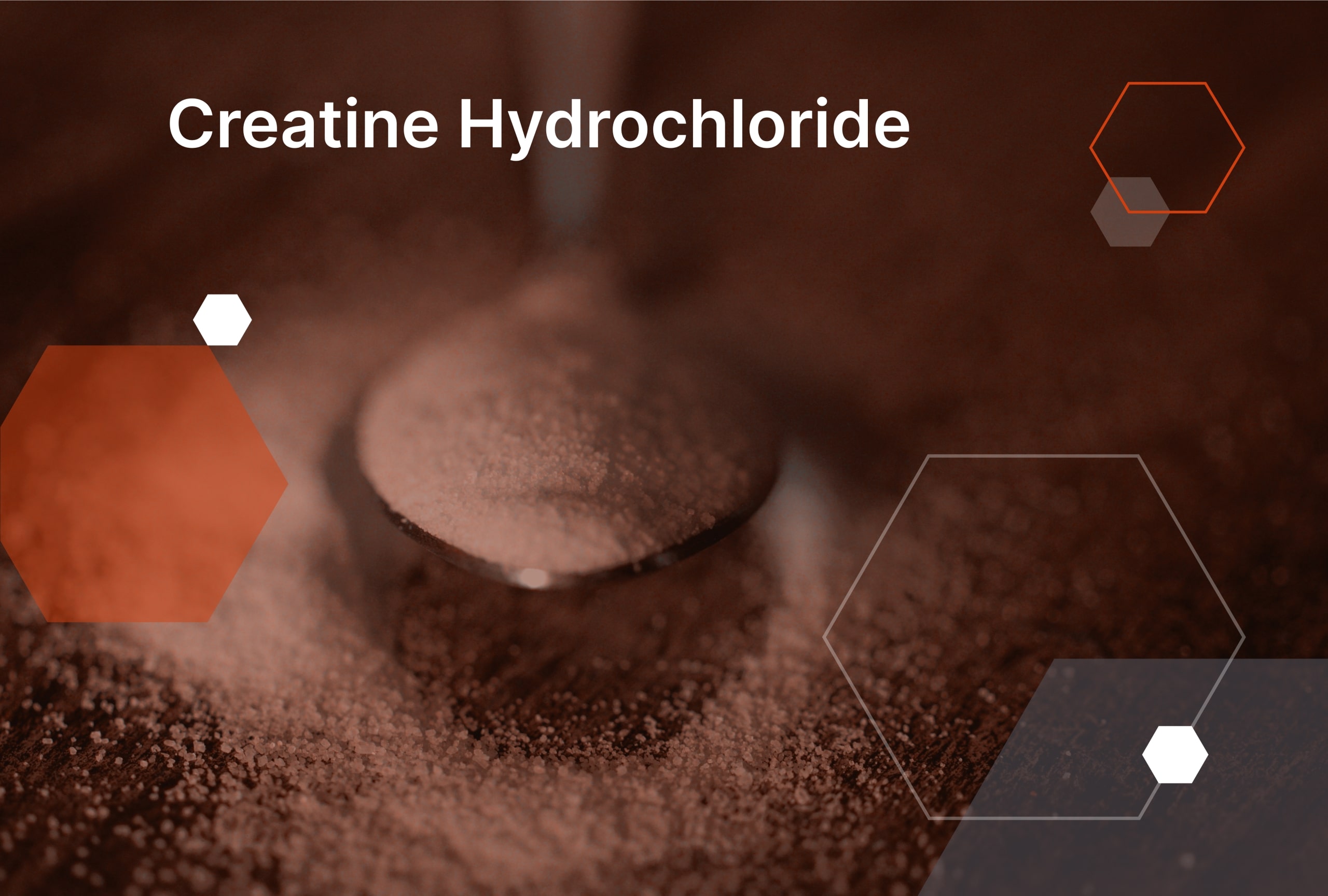
What is Creatine Hydrochloride used for?
Kemiex is an all-in-one market information, purchasing and sales platform for animal and human nutrition raw materials. In the following series of articles, we will explain the functions and uses of products that can be found in the Kemiex marketplace. On this occasion, we are going to explain the benefits of Creatine Hydrochloride:
What is Creatine Hydrochloride used for?
Creatine Hydrochloride, also known as Creatine HCl, is a dietary supplement that is commonly used by athletes and bodybuilders to improve their physical performance during high-intensity workouts or competitions.
Creatine Hydrochloride is a form of Creatine that is chemically bonded with hydrochloric acid, which makes it more soluble in water than other forms of Creatine, such as Creatine Monohydrate. This increased solubility allows for better absorption by the body and may lead to fewer side effects such as bloating and stomach discomfort.
Differences between Creatine Monohydrate and Creatine Hydrochloride
Creatine Monohydrate and Creatine Hydrochloride are two popular forms of creatine supplements used for athletic performance and muscle building. Here are the main differences between them:
1. Solubility: Creatine Monohydrate has low solubility in water and can cause gastrointestinal distress in some people. On the other hand, Creatine Hydrochloride is highly soluble in water and is less likely to cause digestive issues.
2. Dosage: Creatine Monohydrate requires a higher dosage to achieve the desired results, typically around 20-30 grams per day during the loading phase. Creatine Hydrochloride requires a lower dosage, around 3-5 grams per day.
3. Absorption: Creatine Monohydrate requires insulin to be present for maximum absorption, which means it’s best taken with a meal containing carbohydrates. Creatine Hydrochloride doesn’t require insulin for absorption and can be taken at any time.
4. Purity: Creatine Hydrochloride is a more concentrated form of Creatine, with a higher percentage of Creatine per gram than Creatine Monohydrate. This makes it a purer form of Creatine supplement.
5. Price: Creatine Monohydrate is generally less expensive than Creatine Hydrochloride, which can be a deciding factor for some consumers.
Overall, both forms of Creatine can be effective for improving athletic performance and muscle building, but the choice between them ultimately comes down to personal preference, tolerance, and budget.
What are the main uses of Creatine Hydrochloride?
1. Muscle building:
Creatine Hydrochloride is used by athletes and bodybuilders to increase their muscle size and strength. It helps to increase the production of ATP, which is the primary energy source for muscle contraction.
2. Improved exercise performance:
Creatine Hydrochloride can improve exercise performance and help athletes to train harder and longer. It is particularly effective for high-intensity, short-duration exercises like weightlifting, sprinting, and jumping
3. Increased power output:
Creatine Hydrochloride can increase power output during high-intensity exercises. It does this by increasing the amount of Creatine Phosphate in the muscles, which is used to produce ATP.
4. Enhanced recovery:
Creatine Hydrochloride can help to enhance recovery after exercise. It does this by reducing muscle damage and inflammation, which can help to reduce soreness and speed up recovery time.
5. Improved cognitive function:
Creatine Hydrochloride may also have benefits for cognitive function. It has been shown to improve memory and cognitive performance in older adults, and may also have benefits for people with neurological disorders such as Alzheimer’s and Parkinson’s disease.
It is important to note that Creatine Hydrochloride is a dietary supplement and should not be used as a substitute for a healthy diet and exercise regimen. It is also important to follow the recommended dosage guidelines and consult with a healthcare professional before beginning any new supplement regimen.
Which foods are the main sources of Creatine Hydrochloride?
It can be found in certain foods, although in smaller amounts compared to supplements. Here are 10 examples of foods that are sources of Creatine:
1. Beef: Beef is one of the richest sources of Creatine, with about 5 grams of creatine per kilogram of meat.
2. Pork: Pork is also a good source of Creatine, with about 1-2 grams per kilogram of meat.
3. Fish: Fish such as salmon, tuna, and herring are good sources of Creatine, with about 0.5-2 grams per kilogram of fish.
4. Chicken: Chicken contains small amounts of Creatine, with about 0.03 grams per kilogram of meat.
5. Rabbit: Rabbit meat is also a good source of Creatine, with about 0.5 grams per kilogram of meat.
6. Dairy products: Milk and yogurt contain small amounts of Creatine, with about 0.01-0.02 grams per kilogram.
7. Eggs: Eggs contain small amounts of Creatine, with about 0.005-0.01 grams per egg.
8. Vegetables: Vegetables such as beets and spinach contain small amounts of Creatine, with about 0.003-0.01 grams per 100 grams.
9. Nuts and seeds: Nuts and seeds such as almonds, peanuts, and sunflower seeds contain small amounts of Creatine, with about 0.001-0.002 grams per 100 grams.
10. Fruits: Fruits such as pineapple, avocado, and grapefruit contain small amounts of Creatine, with about 0.001-0.002 grams per 100 grams.
It is important to note that the amounts of Creatine in food sources are significantly lower than the amounts found in supplements. Therefore, it may be difficult to consume enough Creatine through diet alone to achieve the same performance-enhancing effects as supplements.
Where to buy bulk Creatine Hydrochloride and get market information?
In Kemiex, we offer a safe and private online environment to buy and sell raw materials for the Feed, Food, Veterinary, and other life science industries. We also offer market information such as Price Trends, Trade Flows and Market News for all the micro-ingredients of the mentioned industries.